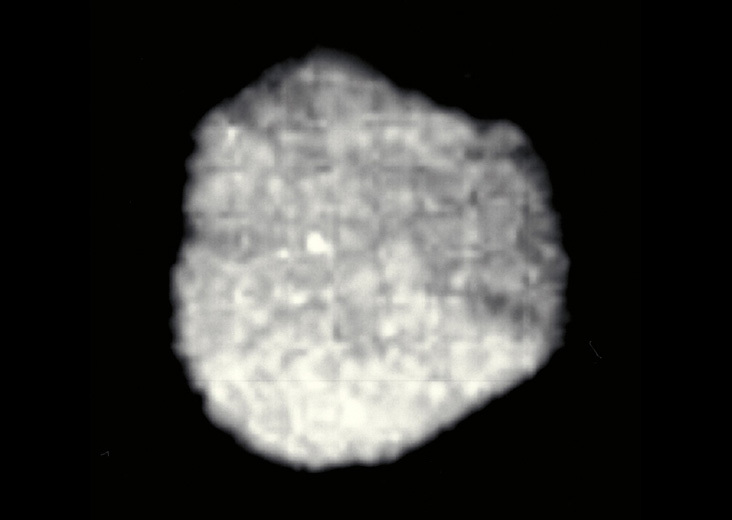Proteus

Proteus was discovered in 1989 by the Voyager 2 spacecraft. This is unusual since a smaller moon, Nereid, was discovered 33 years earlier using an Earth-based telescope. Proteus was most likely overlooked because it is so dark and the distance between Earth and Neptune is so great.
Proteus is one of the largest of Neptune's known moons, although it is not as big as Triton. The moon has an odd box-like shape and if it had just a little more mass it would be able to transform into a sphere. Proteus orbits Neptune about every 27 hours.
Proteus is irregularly shaped and heavily cratered, but it shows no sign of geological modification. Circling the planet in the same direction as Neptune rotates, Proteus remains close to Neptune's equatorial plane. Proteus is one of the darkest objects in our solar system. Like Saturn's moon Phoebe, Proteus reflects only six percent of the sunlight that hits it.
Proteus is named after the shape-changing sea god of Greek mythology. Proteus was originally designated S/1989 N 1.




